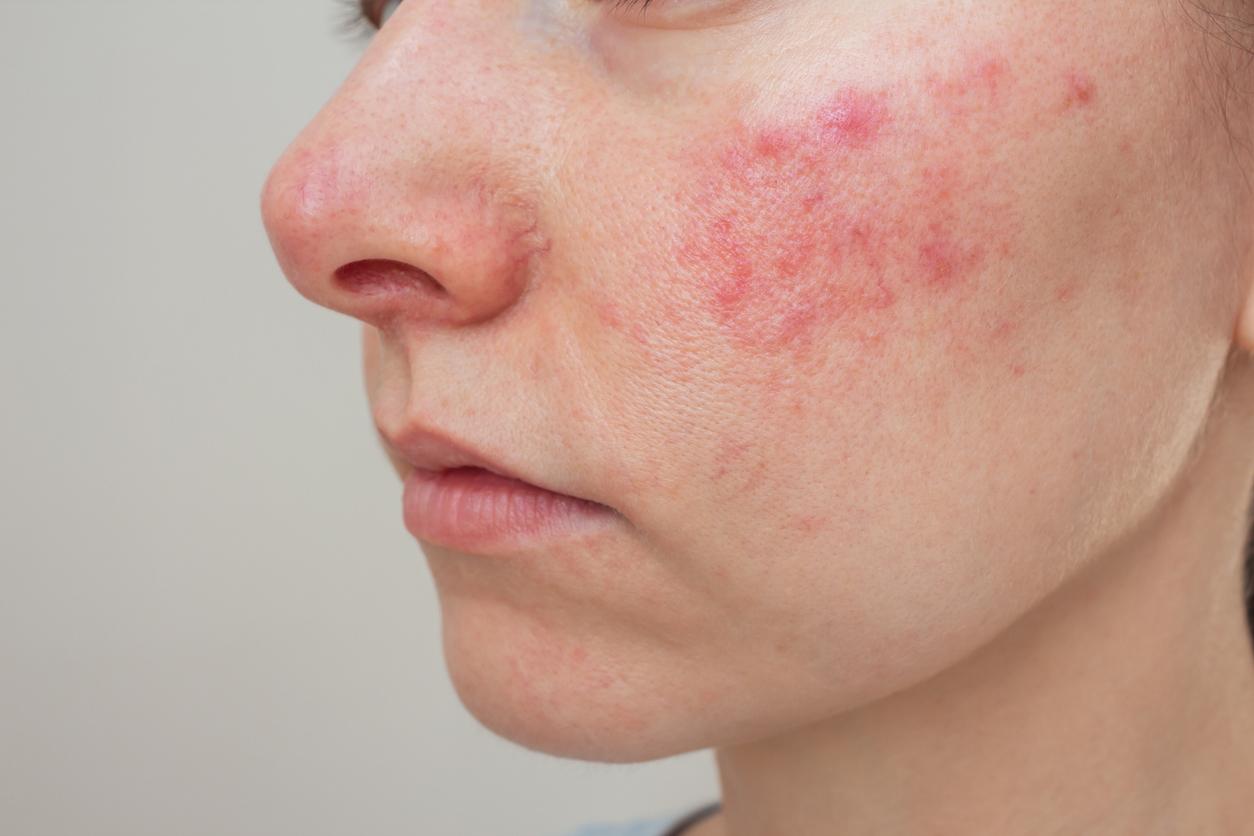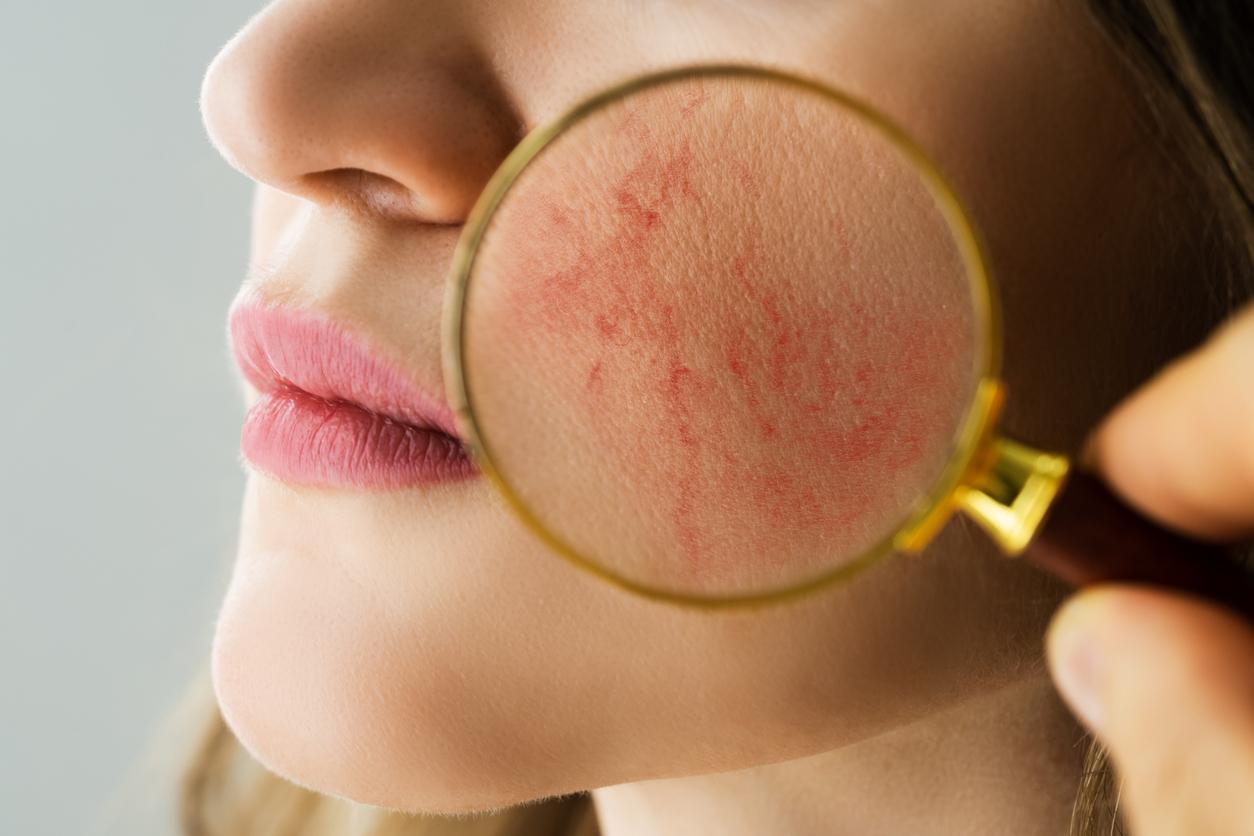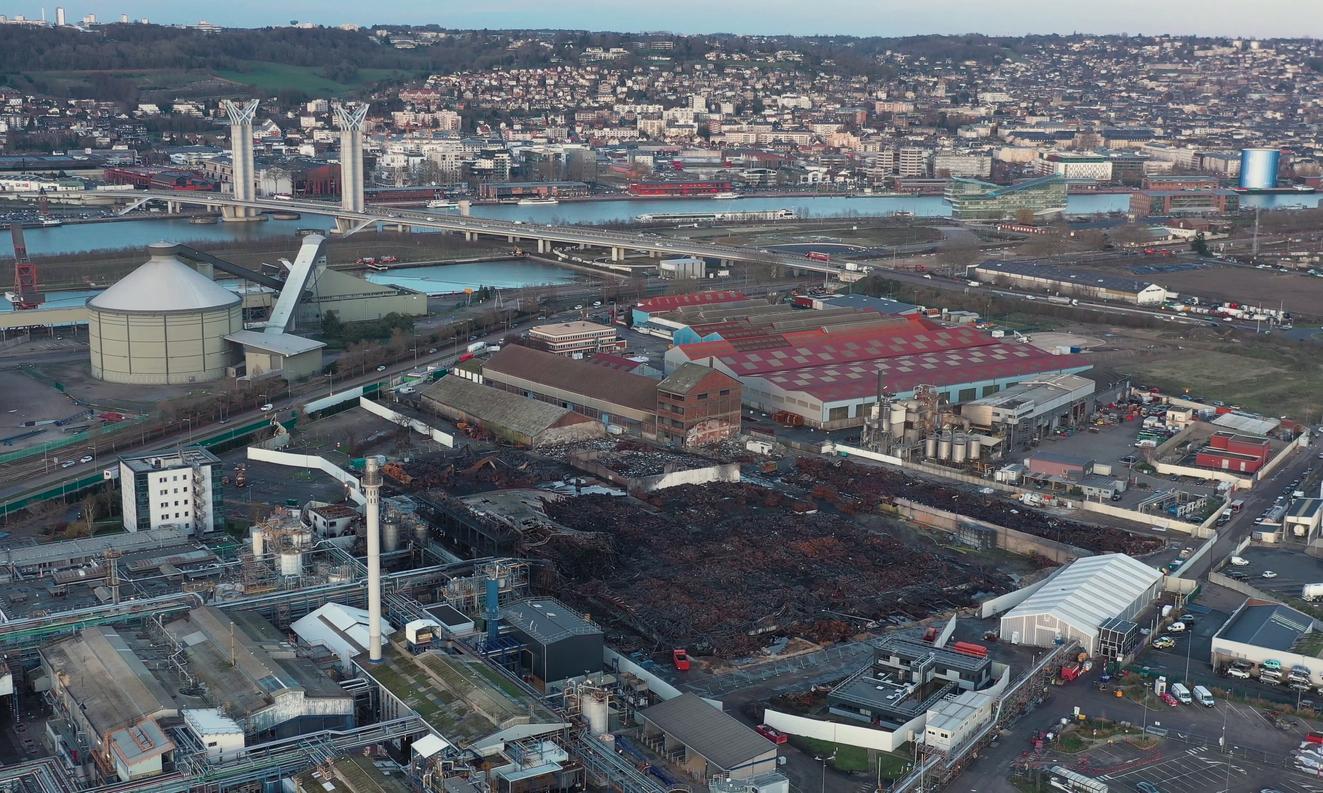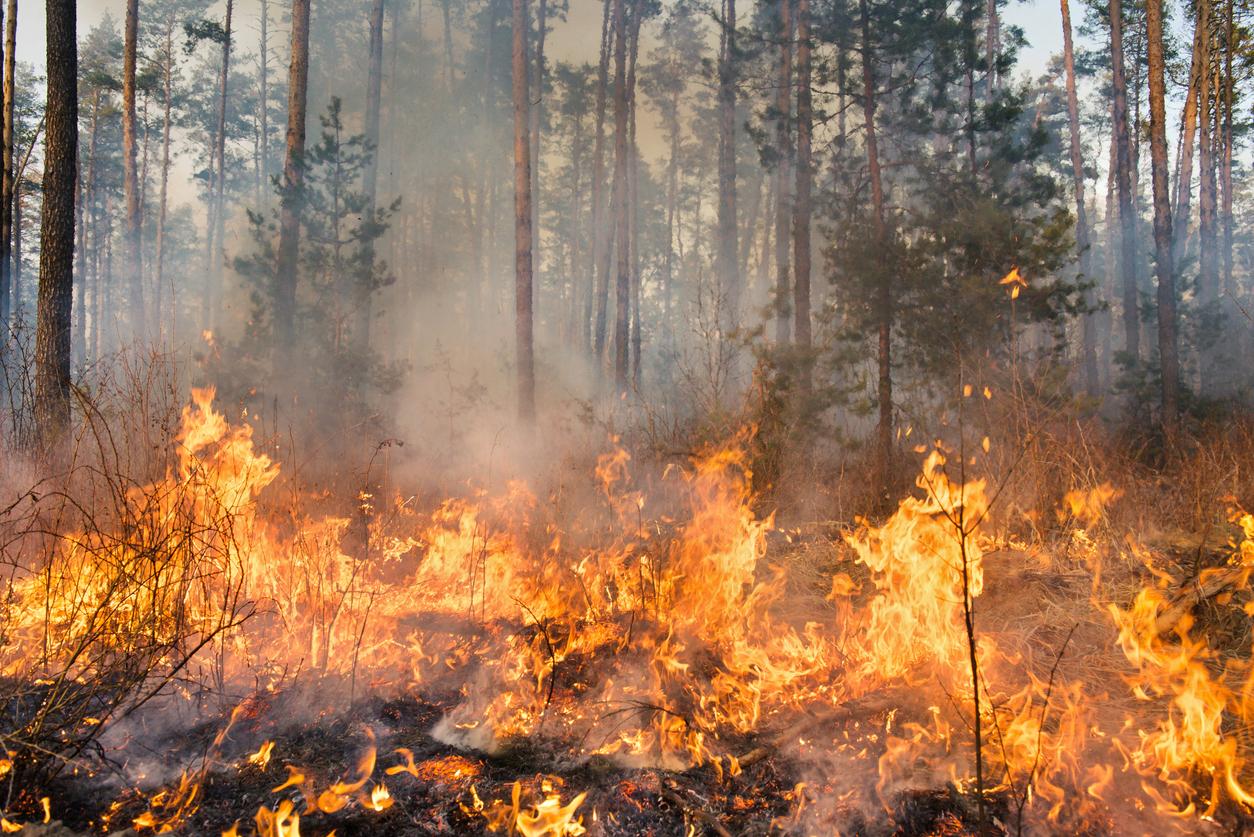Located on the face (forehead, nose, cheeks and chin), the rosacea affects 3 to 6% of the population between 30 and 60 years of age with varying intensity, and more women than men, especially those with fair skin and blue eyes. There are several forms: erythematous rosacea is characterized by transient or permanent redness with small dilated vessels, and episodes of flushing. In the papulo-pustular form, pimples, which resemble those of theacne, appear with more or less redness.
Very rarely, in men, the skin may thicken over the nose (rhinophyma). Finally, ocular involvement may exist with inflammation of the eyelids. This dermatosis often has a significant impact on the social and professional life of the people who are affected by it.
What improves it: clean this very reactive skin with very soft lotions or milks. Use a non-greasy moisturizer. And avoid all products containing fruit acids, retinol, vitamin A or C too aggressive. Just like scrubs, peelings, skin cleansing… But also greasy, occlusive cosmetics like masks, which generate inflammation.
You can use corrective makeup, which combines a high pigment load and the absence of risk of allergy. Redness is easy to fade, provided you know some basic rules for its application. The use of a corrective foundation brings an immediate result, with the “disappearance” of the lesions, while waiting for the effectiveness of the medical treatment.
Protecting yourself from the sun is essential, because the thermal effect aggravates the feeling of heat in the face and the dilation of the vessels. In the city, an index 30 is necessary and an SPF 50 or 50 +, if there is a lot of sun, choosing textures that are not too greasy.
New treatment reduces redness
Against diffuse redness, a new treatment has existed for a few months: it is a brimonidine tartrate gel. Its application on the face reduces redness by cutaneous vasoconstriction in 30 minutes, and lasts up to 12 hours. This treatment acts on the facial erythema of rosacea, moderate to severe, in one application per day (5 peas of product on the areas of the face). The product is prescribed by the dermatologist and not reimbursed. A tube allows about a month and a half of treatment. But the redness comes back as soon as the treatment is stopped.
To eliminate the rosacea and dilated vessels, the vascular laser (KTP or pulse dye) is very effective. Two to three sessions are sufficient at six to eight week intervals. They cost between 100 and 250 € per session and are not reimbursed.
To treat papules and pustules, oral antibiotics (cyclins) are combined with topical antimicrobials (metronidazole). They are taken in small doses for several weeks or even months to stop the inflammation. Then the antibacterial treatment is continued on its own. The ocular form of rosacea, alone or with another form of the disease, can also be treated with oral antibiotics, for several weeks or months. You can massage the eyelids with lukewarm water compresses every day to decongest the eyes.
As for the rarest form, rhinophyma, it is treated surgically or by ablative CO2 laser. This last technique gives very good results in one or two sessions. The consequences are heavy: significant crusts form making social eviction essential for about ten days.
Alternative medicines act on the vascular field
On the herbal side, the recommended plant is hawthorn (Crataegus oxyacantha) in the form of mother tincture or glycerine macerate of buds, at the rate of 50 drops three times a day, five days a week, for a three-week course. To be renewed as needed.
On the homeopathy side, depending on the patient, several remedies are recommended: Pulsatilla, Lachesis mutus, Eugenia jambosa, Sanguinaria canadensis, Ledum palustre. We can try Lachesis mutus 9 CH, one dose per week for two months to treat the ground and Eugenia Jambosa 5 CH, three granules twice a day to treat any lesions.
On the aromatherapy side, the most suitable essential oil is Corsican helichrysum (Helichrysum italicum). To reduce redness and rosacea, put 1 drop of essential oil in a dab of moisturizer at bedtime for a week, every other week. This treatment can be continued for several months without any problem. You can also mix 1 drop of Corsican helichrysum essential oil in half a teaspoon of vegetable argan oil. Apply to lesions in the evening at bedtime every other week.















